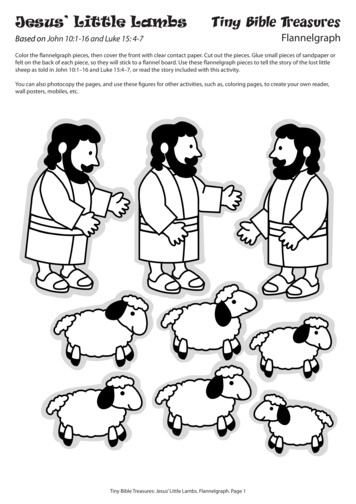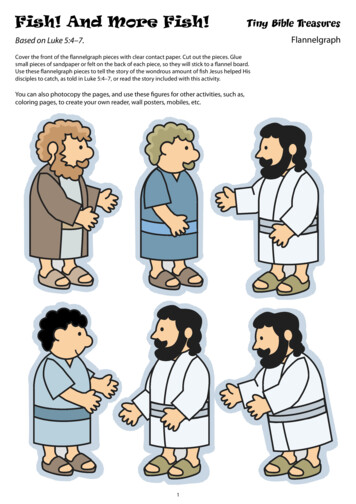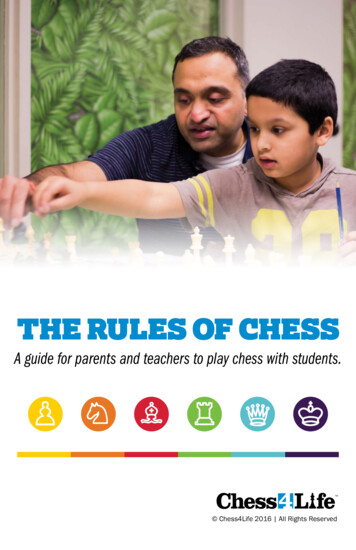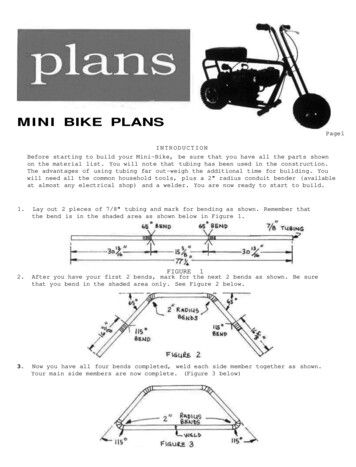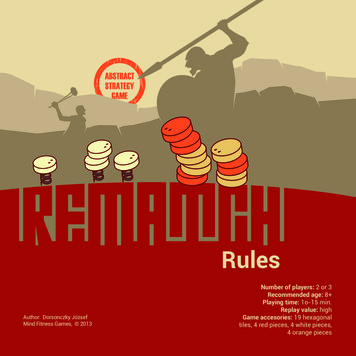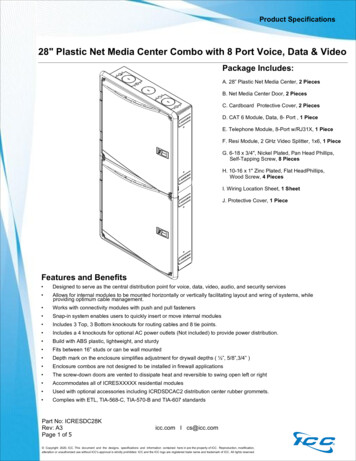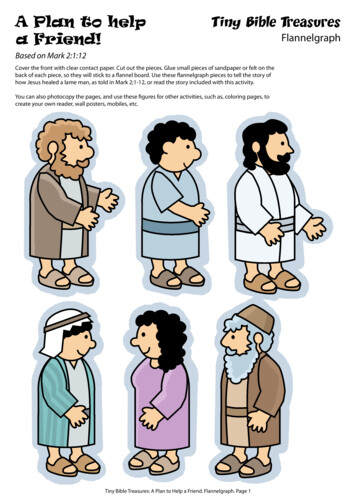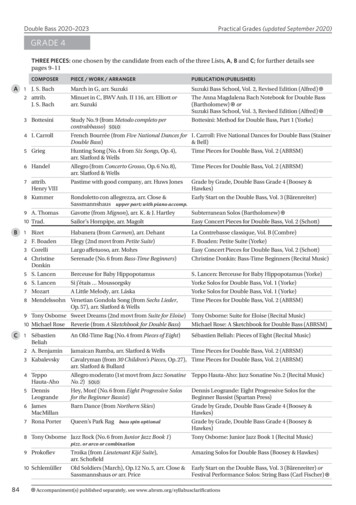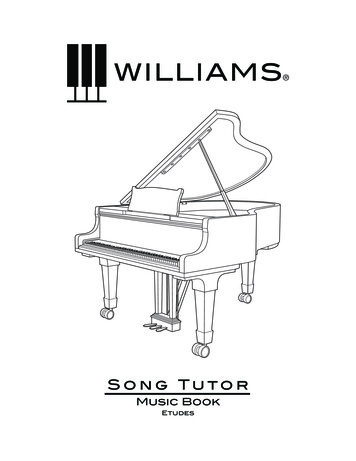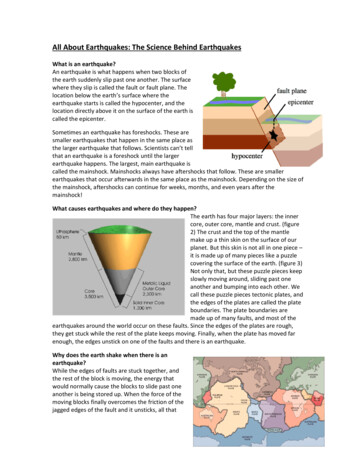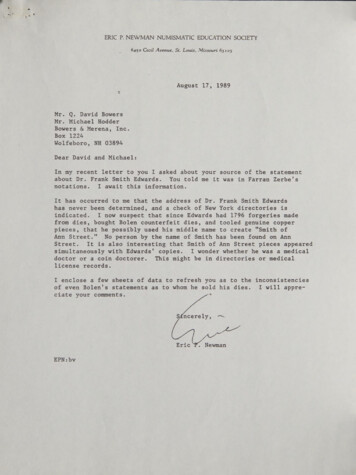
Transcription
ERIC P. NEWMANNUMISMATICEDUCATIONSOCIETY6450 Cecil Avenue, St. Louis, Missouri 63105August17,1989Mr. Q. David BowersMr. Michael HodderBowers & Merena,Inc.Box 1224Wolfeboro,NH 03894DearandDavidMichael:In my recent letter to you I asked aboutabout Dr. Frank Smith Edwards.You toldnotations.I await this information.It hashasoccurredneverbeenindicated.from dies,pieces,Annthattheaddressof Dr.Frankdetermined,andaofYorkI nowboughtthatItusedNo personby thehis pies.ThisnameSmithmightto createhasof AnnI wonderbeinyoursheets of data to refresh youstatements as to whom he soldcomments.Edwardsbeenis"SmithfoundStreetofon Annpieceswhetherhe wasdirectoriesoras to thehis dies. Sincerely,EricEPN: bvSmithdirectoriesappeareda medicalmedicalrecords.I enclose a fewof even Bolen'sciatechecksuspect that since Edwards had 1796 forgeries madeBolen counterfeit dies, and tooled genuine copperhe possiblyStreet.''Street.to meyour source of the statementme it was in Farran Zerbe'sP. NewmaninconsistenciesI will appre-
} kus 14 aesStruckCopiesoFEarRLyAMERICANCoINSeeReSoaGees Z‘yieS 4rf 2ay aCOPY-e ?3ORIGINALeBAR CENT. 65 struck in copper in 1862 and the dies sold to W. Elliot fWoodward who struck twelve pieces in silver. The Bushnell Sale of 1882(lots 1162-64): discloses additional strikings in nickel, brass, and tin, but sinceWoodward in his circular (reproduced here) makes no mention of which of thehe,eeheadasSERthree Lovetts was commissioned to strike the silver pieces, we shall probablynever know who was responsible for the other metals. Bolen’s copy has theS passing over, instead of under, the A. Bolen no.2; Johnson no.?2.Copper 5.25-5.30 grams, Silver 5.50 grams; Genuine Copper 5.65 grams,“eSee XxOPES wy Fr payofEOS”3aer”needAC12&PisceAwTExje ‘RIG Seegid 3ges?SSaea ?Neo suchCombinationORIGINALCvists.grams: Genuine copper 7.50-7.60The Coin Collector’s Journal ye2s 4esgenuine, it points to a small ray.81a* —lev2. CONFEDERATIO CENT, Large stars. 2 struck in silver and 40 in copper,in 1863 and the diesdestroyed by Bolen. According to the Woodward sale ofApril 1866, a unique striking is known in brass but this may be a trial pieceinadvertently omitted in Bolen’s listing. The following points of comparisonmay be used for identification:a) The tops of ME in Americana are joined on the genuine.b) The lower portion of the S in Tyrannis is just about closed up onthe genuine while it is quite open on the copy.c) Bolen placed a dot in the Y of Tyrannis as a secret mark.d) The point of the star below the second E on the reverse is directed to a small ray on the Bolen; on the genuine, it points toa large ray.e) The star under N points to a large ray on the Bolen; on theCopper 9.45-9.50 grams, silver 9.70-10.65grams. Bolen no.7: Johnson no.7.Vigg SsmY‘—COPY} MG
5hg Vvv3‘Ori2 9tonpA.imsimiTatir . CONFEDERATIO CENT, Small stars. The same general information andstatistics as apply to the preceding — including a unique striking in brasswhich weighs 8.60 grams. Bolen no.8; Johnson no.8.3shebeleFEONRV Affestarlevelenaeatteoen—COPYORIGINAL4. HIGLEY COPPER. 2 struck in silver and 40 copper in 1864 after which thedies were sold to Dr. F. S. Edwards. It is not known how many Edwardshad struck although pieces are known in nickel and brass.a) Bolen’s copyhas six dots on each crownband of the reverse,while the genuine has only five.b) The copy has a complete circle around the deer while the genuinehas not.c) Bolen’s secret mark, a dot, may be seen in the C of Pence.poneCopper 9.50-9.70 grams, Silver 8.00-10.65 grams; Genuine Copper 7.90-11.02grams. Bolen no.10; Johnson no.11.GaSayBE o &nyoeaNie&imatievA4onCOPY:RoNARumcAORIGINAL5. CAROLINA TOKEN. 2 silver, 40 copper, and 5 brass struck in 1869 afterwhich the dies were rendered useless and deposited with the Boston Numismatic Society. One of the silver copies is known to have been struck over an1807 Half Dollar and is so recorded in lot 1441 of the sale conducted by theChapman Brothers in June 1885.Copper 10.65 grams, Silver 6.55 grams; Genuine Copper 8.42-10.49 grams.Bolen no.33; Johnson no.36.January-February,1952aFeOn
StruckCopiesoFEARLYAMERICANCOINSa) Bolen placed the tip of the first E of Excelsior to the right of theleft foot whereas the genuine has the E directly below the foot.b) The copy has the outer oval on the reverse coinciding with thetop ground line; the genuine has two complete ovals, the outerone breaking the top ground line.c) The copy produces a perfect alignment of the side of the secondG in George, the bottom of the ear, and the lowest point of thestar that follows Clinton; the star on the genuine is high andcannot be aligned with the ear or the G.d) There is a dot in the O of George placed there as a secret markby Bolen.Copper 10.00-10.65 grams; Genuine Copper ditto. Bolen 37; JohnsonSilver copy was struck over an 1822 Quarter by Bolen.9.MULEof Reverse 2 with Reverse40.3. Bolen Mule No.1. One struck in brass.MULE of Obverse 7 with Reverse 8. Bolen Mule No.11. 2 Silver, 40 Copper,5 brass.11. MULE of Reverse 7 with Reverse 8. Bolen Mule No.12. 5 struck in copper.12. MULE of Obverse 8 with Reverse 7. Bolen Mule No.13. 5 struck in copper.13. MULE of Obverse 8 with Obverse 7. Bolen Mule No.14. 5 struck in copper.14. MULE of Reverse 2 with Obverse 4. Unlisted by Bolen and probably struck byEdwards. The dies are obviously defaced and partially restored.Other mules also exist combined with Bolen’s Store Cards and unlisted both byBolen and Johnson.10.EDWARD’SCOPIESVery little is known of Dr. Frank Smith Edwards of New York. His nameappears regularly amongst the buyers in the sales catalogues of the 1860’s—a factwhich unquestionably placed him in the ranks of serious collectors of the day. Hisown collection was catalogued by Edward Cogan and sold by Bangs, Merwin & Co. inOctober 1865, shortly after his death. None of his copies, incidentally, appeared inthe sale. The authority for his responsibility in striking and/or issuing copies rests withW. Elliot Woodwardand Ed Frossard in the case of the Half Cent, and with EdwardCogan for the Immune Columbia which is illustrated by Crosby on Plate X.CORYORIGINAL1. HALF CENT 1796. 12 pieces struck; 4.85 grams; genuine 5.05 grams. Bushnell 2768. In the Francis S. Hoffman collection sold in New York during a fourday sale in April 1866, Woodward has this to say about lot 944: “One of theEdwards counterfeits; as fine as when it fell from the die; this piece is foundin no cabinet in the country; the dies were destroyed since the death of Dr.Edwards,twelveJanuary-February,together with all the pieces struck from them, with the exception ofpurchased1952fromhim,his statementbeing that they werebought in11
STRUCKCopiesOFEARLYAMERICANCOINS London. It now appears that the dies were made to order in New York City.”The piece in this sale, incidentally, was purchasby Crosbyed for 5.50.ieIMMUNE COLUMBIA/NOVA CONSTELLATIOa) The reverse of Edwards’ die has the lowest star pointing directlybetween V and A of NOVA, whereas the star of the genuinetends to point toward V.b) The space between the C of COLUMBIA and the head is wideron the genuine than on the copy.c) There is no ground line visible on Crosby's illustration of Edwards’ copy.Note: The writer has been unable to procure a specimen of the Edwards copyfor illustration and weight.aeoDICKESONProf. Montroville Wilson DickesonAmerican Numismatic Manual published inof medicine, most of his years were spent inCOPIES(1813-1882) was best known for hisPhiladelphia in 1859. Although a doctorthe study of antiquities and archaeology.CORY,1. ,brass, white-metal. This piece comes muled with various store cards and medals. AlthoughCrosby called this a Robinson piece and others attributed it to Idler, it remained for Woodward to give Dickeson credit for issuing this copy. It wasstruck, probably in Philadelphia, in the 1850's.COPYORIGINAL2. CONTINENTAL DOLLAR 1776. Copper, tin, and according to Haseltine,also 50 specimens in silver. Struck as a souvenir for the Centennial of 1876,this piece, like the preceding, cannot deceive. Years later, in the twentieth Cen gstury, Thomas L. Elder acquired the dies.§). /2etatny teks,-2ae os-Sea 6 &%Af* The Céin’ Collector's Journal
StruckCopiesOFTHEEARLYGRANTAMERICANCOINSCOPYHorace M. Grant, a dealer who operated Grant’s Hobby Shop at 109 EmpireStreet, Providence, Rhode Island, had copies of the Rhode Island token made in 1936.These were struck by the Robbins Company of Attleboro, Mass. in both bronze andsilver, the latter metal in a very limited number. To avoid confusion, despite the obviousmedallic character of the copy, Mr. Grant had his initials H.M.G. placed on the crestof the wave below the Howe battleship.THE SMITHCOUNTERFEITS“Smith of Ann Street” seems to be a byword among collectors of large cents yetthis engraveris shroudedin a mantleofHis counterfeitso scurity.arenothingmore“than genuine cents which were rather tastefully tooled and improved upon. Althoughhis 1793Centsarethe mostcommon,it doesnotseemimprobablethathe also‘improved’ or otherwise altered other dates, e.g., 1799 and 1804.From the Jencks and Paine Sale sold by Woodward in December 1866, we hearthe first mention of Smith pieces under lot 303: “1793 Unique variety; obv. head with“flowing hair; rev. wreath, stars and stripes on the edge. One of Mr. Smith’s make, anda more artistic and Beautiful coin than was ever issued by the U.S. Mint.”14The Coin Collector’s Journal
DULYseo255Charles C. Cheek of Sanford, N. C., has an 1817 cent, with eleven stars.He states that all the references he has seen to this date are to the thirteenand fifteen star varieties.He wouldbe glad to hear from anyonehavinginformation bearing on this variety.No. 6. HIGLEY CENT.Mule.This shows the same obverse as No. 5,joined to the same reverse as No. 2, with large stars in the sunburst.Bothof these dies are by Bolen.in his list.While he saysNewYork,still he statesCuriously, he does not mention this combinationthat he sold the dies of No. 5 to Dr. Edwards ofthat he destroyedthe dies of the pieces“as No. 7-in his list, whicthas -beendescribed in the Numismatist“theConfederatioCent. Nevertheless,tion, and there are several specimensthese dies have beenknown.Coprer.useddescribedas No. 2,in conjunc-There are not manymoreinteresting nor morerare series of piecesthan the metallic checks issued by various Indian traders, which for a timepassed or at least were valued just the same as money.As a well-knowncollector has stated, the explanation of the rarity cf such piecés now is dueto the fact that they were nearly all redeemed, as it was not reasonable tosuppose that the Governmentwould permit the Indians to be defrauded byissues of this kind, especially as nearly all the traders who issued them werelocatedat the Governmentforts.Thepiece illustratedabovebearsthename of a Western locality that has played a wonderfully important part inthe history of the Far West, and perhaps is better knownthan any othersimilar point in that section of the country.Fort Laramie was the site ofone of the earliest of the trading forts established in that part of the West,and was conducted by the fur companies for many years before it was purchased by the Government and maintained as a military establishment.Itwas the first permanent post erected in Wyoming, and was built by WilliamSublette and Robert Campbell in 1834.Both of these names are weil-knownin the annals of Western fur trading.It was first named Fort William, afterMr. Sublette, and was situated on LaramieFork, a tributary of the PlatteRiver.These traders dealt in furs principally with the Indians of that section—the Arapahoes, Cheyennes, and the Sioux.The fort then was a palisade eighteen feet high, with a few abode houses inside.In 1835 it was soldto the AmericanFur Company,whichincludedamongothers MiltonSublette, and Jim Bridger, also well-known pioneers in the fur trade.In 1836the fort was rebuilt at an outlay of 10,000, and then an attempt was madeby the companyto call it Fort John.A confusionof namesresulted,andthe
(A184Bowers and Merena — Half Cents, Large Cents11793’’ Cent by Edwardsikerateagf STAthis 5die aears, jc after of United States Half Cents that “mint red onesWalter Breen notes in his EncyclopediaUnder magnifica-y inten,avyare veryrthegtheunone”: All half cents coined this year are from the same die pair.base and part of a third 1 can be seen to the right of the date, a diepunching error.8411853 B-1. AU-58. Smooth glossy brown surfaces.7igning:sentingnany §Accompanying the piece is a typed note signed “F.Z.,” for Far-From anGlossy brown surfaces are tinged with iridescent blue.ran Zerbe, which reads:aesthetic viewpoint this coin stands head and shoulders amongmost other Mint State examples seen of the date.“The hand engraved 1793 Liberty Cap cent by Dr. Frank SmithEdwards of New York City, 1864. Dr. Edwards was a serious coincollector; his name is best associated with his die struck 1796 halfcent.eciatiogTe“This 1793 cent at first appearance looks like a die struck coin.The obverse is entirely hand engraved; it is a 1794 cent as seen fromthe reverse. The obverse is so designed and engraved so as not tofool the collector. An experienced collector of large cents will havelittle trouble when examining the date and the style of lettering.Upon close examination many details of the Jefferson head can beseen. The Liberty cap and the diebreak are almost perfect in alldetails.“This is the only known copy of this cent; none ever came to lightpa SiablyLarge CentsD rns selfsylvaniVhenr. Dru whereab) James‘1793’ large cent, a fantasy made in imitation of S-13L, believedto have been retooled by Dr. Frank Smith Edwards circa 1864, using a 1794 cent as a matrix.1855 B-1. MS-64 to 65. A breathtakingly beautiful, superb specimen. follo rFargrarethetion traces offorhis1851 B-1. MS-60. Fiery original mint red surfaces just beginningto fade to brown.1793 S-4 Chain CentKed thetter. Itered in a2, Making’in almost 80 years; it is most unique and considered a masterpiece.Evidently Dr. Edwards never put it up for public sale, so as notto confuse the collector as being a genuine cent of 1793. This is notconsidered as a counterfeit and was not made in large amountsor sold as genuine to fool the collector. F.Z.”The piece weighs 162.9 grains. The obverse grades VF-30 or better, while the reverse is worn nearly smooth.Our consignor informs us that he purchased the piece from Lou Werner.Previously it was owned by Farran Zerbe.It is not our normal practice to offer retooled coins for sale, but the present piece hasa strong numismatic value for reasons indicated in the Zerbe letter. As a genuine Americancent was used as the matrix, it is not a counterfeit; an alteration by retooling is the proper designation.esAAaey1794 S-18b CentHead of 1793421794 S-18b. Head of 1793. EF-40 or close to it, somewhat lightly defined as per the shallowly prepared dies. At the right side of the obverse is a large planchet lamination, as illustrated, which causedthe corresponding part of the reverse, consisting primarily of thecentral letters of the word AMERICA, not to strike up properly.Glossy light brown surfaces. A scarce and desirable Rarity-4 issue.431819 Newcomb-8. Small Date. AU-58. Lustrous light brown surfaces with just enough kegmarks to drop this out of the MS-60 class,although a few years ago it would have passed as MS-60 in a breeze.‘ially shai5. (Total: 401793 Sheldon-4. Chain AMERICA.Periods after obverse legends.Value of F-15 but actually VF-20, but with a significant test cut onthe obverse rim above ER of LIBERTY. Smooth light brown surfaces are free of planchet problems. The reverse if graded separatelywould easily make VF-30. A very pleasing example of this highlydesired issue.yeUndoubtedly from the famous Randall Hoard, which contained numerous examplesof N-8.
AUCTIONS BY BOWERS AND MERENA INC.AugustMr.6450Sit,Dear18,Eric1989P.Box 1224WOLFEBORO, NH 03894(603) 569-5095NewmanF axAvenueCecilLOGMO.-5319(603)3 569-536305Eric:Thanks for your letter of AugustPhiladelphia Highway coin find.the find included a "pattern" ofWhatever happened to this piece?14, and the information that you provided about theI still think that it is very interesting to note thatgreat rarity along with other coins much more common.I must apologize for my New Jersey presentationwas dropped on the floor by James Taylor of theexactlywhatI wasshowing!However,on a 1788 Connecticut copper spoke forOgden, ordering copper in March, 1789.I thinkitself,at the ANA Convention.My slideANA, and without it I was tterlistofoverstruckfromMatthiasI did not forget the supporting materials for the "1793" Edwards cent.I have enclosedphotocopies of the material that came to us from Byron White.The longer discussionis signed"F.Z",theleftlowerin L.S.whichisWerner'sI takein Byron'shand.to be FarranownZerbe.handwriting;It is interestingThewhileto notethethatsmaller,darker,lightersquare"Z" statesinformationtoits"Upon closerightatisexaminationmany details of the Jefferson Head can be seen."I have always felt the Jefferson Headcents to be quite unusual; they stand out from the series like no other.I suppose theimportant part of the project now is to pin down who Dr. Frank Smith Edwards of New YorkCity was; and to trace the earliest appearance of the Jefferson Head cent at auction.The name appears to have been applied to the variety in 1867.This is all the informationI have on this piece.The equation of Dr. Frank Smith Edwardswas made by Byron; it does not appear in the "J.Z" commentary.Finally, thank you for supportingI take it as an honor to be amongYours.my application for membershipsuch an illustrious company.and res:asstatedWhen great collections are sold Bowers and Merena sells themof AnnRittenhouseStreet"Society:
BOWERS AND MERENA GALLERIES, INC.August21,1989Box 1224WOLFEBORO, NH 03894(603) 569-5095Fax line: (603) 569-5319Mr.EricP.Newman6450 Cecil AvenueSt. LouiseuMG63105Dearkhae:Thank you for your letter and enclosures.I will have Michael Hodder send you aXerox copy of the typed note by F.Z.(Farran Zerbe).This came from Byron White.I know nothing of Edwards or Smith of Ann Street and do not know if they are thesame person or different people.I await your research, which, if you followprecedent, should tell us everything we ever wanted to know on the subject!regards,Q. l)Your friends in the rare coin business
.ap——The hand engraved 1793 Liberty Cap Cent byDr.Frank Smith Edwards of New York City 1&6).Dr.Edwardswasa sentousiodincollector,hisnameis best associated with his die struck 1796 halfcent.ftVei‘This 1793 cent at first appearance looks likeadie struck coin,lé the obverse is entirely handengravedyit is a 179) cent as seen from the reverse.Theobversewasso designedandengraved50 as not to fool the collector.An experiencedcollector of largecents ,of-lerge-eentswill havelittle tyouble when examining the date and thestyle of ,lettering.Upon close examination manydetailsof theLibertyCap and the die breakJefferson;Head;in all details.canbearealmostseen. TheperfectThis is the only known secs of this cent,noneever came to life in almost 8&0 years,it is mostunique and considered a masterpiece. Evidentlybr.Edwards never put it up for public sale,soas not to confusethe collectoras bein» agenuine cent of 1793. This is not considered asa counterfit and was not made in large amountsor sold as genuine to fool the collector,{ MatasrelyAryeh,1bes,SF3 fe 8AADMer untA“Cyti ASigo.So.CteArte{ radY(79%veShildon. 73-6Devel Ama ced4 foo Shutpee oee EO ofQbvr.aeebfronIr pa eyerLe;Calfdoe(} LoreWereLe)
cAe8/29/89Ph oneaft.callfromJoeLasser:Dr. Frank Smith Edwards had a home at154 West. 21st Street, \NYC, according. tothe 1864 census.Was not in the 1860or the 1869,'70 census.No other data.bv
ERIC P. NEWMANNUMISMATICEDUCATIONSOCIETY6450 Cecil Avenue, St. Louis, Missouri 63105aje[s3SpereDhLicaRFAiheRos Dn Frans Sridl Luradia )NY 10036NewYnlkSH, NYCMOALISY ty. LISTSweiSpudSh: ane a aewialimall,is Rate,VL oPef OStae ASRa moeono\fbo‘) TheAunDySve nit A diurtnrisoeDo,nerneesulAee eo,1ieeYsageteMi eamesSeow:YowaeNVanuLeaf“Az EO IR eg agOW)*Sigua dua/(860theERMeson fron EOTeDe A etaitPLLshari.jtpred wn wwe fagorList at ary Lime « Was bis deathoeBitant S eereyTee.RE Sea}eeher iy labse Ceeeamerdad esEIAGaA. acummnd arte Cork gleeraeCePeCe EE PeTS 76Le UO pave bonete) echivea easenerego eaod ofrere st footmt t-the U.S4 (KbYSaareeeaSXseeehaoashen.awa) meAa,anaesGl«LoeweBofp eeOD dipntcl vec
The EQUITABLEFinancial Companies(o/sDenliesHediVicePresident&Aoa Cue,Sire nell the Llhed alse oecid) ccualaes (OUT eepail T aaywating obed5. x tlaET Aaa? onbt peeaop osThe Phan prirde Lamm BeZh am & beprsabfeud —ee Pasa eiXK 27-5. M40. WT 205 wth a shamele te:eed, F-1gamend ourwtnt\F-20Tox Bee
es aierhd end do. salitnaar S.Braue Heber Ue ame Bo we, Bub. Goad tal !PonerDENIS W. LORINGP.O. BOX 383AIEW YORK, NY 1015"
OFDISPOSALDIES.No. 1. The dies were cut and pieces struck for Chas. E.Vinton, of this city.No. 2.Mass.I sold dies to W.E. Woodward,of Roxbury,He struck 12 in silver, then destroyed the dies.Dies of Nos. 3, 4 andNo. 3. Obverse die not correct.5 I sold to Geo. B. Mason, of Brooklyn, N. Y.Nos. 6, 7, 8 and 9. I destroyed the dies.Nos. 10 and 11. In 1865 I sold these dies to Dr, F. S.Edwards, of New York. I had partly defaced the No. 10dies, but he must have had them restored as I have seen onein nickel. From the No. 11 dies he struck 5 silver, 10 copperand 14 tin. Some years after I saw the No. 11 dies in thepossession of Edward Cogan, of Brooklyn, N. Y., but theywere ruined by rust.No. 12. Obverse die I destroyed.Nos. 13, 14 and 16.I sold these dies to A. R. McCoy,of New York.No. 15. Jas. Parker furnished the two pieces of copper,and after striking the two pieces I destroyed the reverse die.Nos. 17, 18 and obverse of 19 were destroyed.No. 21. The dies were cut and pieces struck for MooreBrothers, of this city.No. 24. Obverse die broke in using.In 1872 I traded the following dies to J. W. Kline, ofPhiladelphia, Pa.: Nos. 20, 22, 23, 25, 26, 27, 28, 29, 32and obverse of 30.No. 31.Thereversewasdiefurnished the pieces of copper.stroyed reverse die.27cut for Mr. Pratt, whoI struck 10 pieces then de-
6Washington Medal.Size 18.Osv.—Head to left. Leg., ‘‘George Washington.”’Rev.—Oak wreath. Leg., ‘‘Avoid the extremes of partyspirit.”’Dies cut in 1862.76 silver, 75 oreide.Fac-simile of Confederatio Cent.Size 18.Oxsv.—Indian standing by altar, holding bow and arrow,with right foot resting onTyrannis Americana.’’Ya crown.Leg., ‘‘InimicaRev.—13 stars surrounded by sunrays.eratio, 1785.’’Dies cut in 1863. 2 silver, 40 copper.Leg., ‘‘Confed-8Fac-simile of Confederatio Cent.Size 18.Osv.—Same as No. 7.Rev.—Similar to No. 7, but has larger sunrayssmaller stars.Dies cut in 1863. 2 silver, 40 copper.49Business Card.Size 18.Osv.—Head to left, star each side.1864.’’Leg., ‘‘J. A. Bolen,Rev.—Liberty cap surrounded by sunrays.States of America.Dies cut in 1864.1025 oreide.Fac-simile of Higley Cent.Size 18.Handbelow.valve of three pence.’’Rev.—Three hammers crowned.1737.’’11‘‘Connecticvt,2 silver, 40 copper.Washington Medal.Osy.Leg.,Leg., ““TheStar below at left of date.Dies cut in 1864.a‘Leg., ‘‘UnitedLiberty.’’Osv.—Stag facing to left.‘andBustSize 37.of �Sha—st 5 ‘ -:aii—,4
PePREFACE.HILE in business as a die-sinker I received my firstorder for a medal, which is number one of Catalog,and any spare time afterward I would pass in cutting diesfor a card or medal for myself. I received very few ordersfor this class of work, there being little demand for it; mostof those wanting such work done would send to some largecity.At that time, besides myself, quite a number here wereNumismatists and had fine collections; one of them suggested that I make Fac-similes of some of the rare coins.They could not procure the original coins and wanted tofill spaces in their collection, but did not like electrotypes.I accordingly started with the Bar Cent, and so on with theothers, seven in all.Although I never thought or tried topass one as a genuine, I have often regretted having issuedthem as I have been informed that they have been worn orrubbed and made to look old, then sold as genuine. I spenta great deal of time on them; on one I worked from a gen-uine coin, on the others from very fine electrotypes. Theyare all quite scarce now. They were not a financial successtome. Many of the best collectors did not like it because Icut these dies, which is another reason why I am sorry Iissued them. But it has all passed and gone now, and mostof the many collectors and old friends to whomI was wellknown, have passed away to the ‘‘ great unknown.’’ Tothe few who may still be living, I hope (if they receivethis Catalog) it will be a pleasant reminder of old times.The catalog published by Mr. Johnson, in 1882, notbeing complete,andcontainingnumerousto issue the present edition.SPRINGFIELD, Mass., OCTOBER,errors, led meJ. A. BOLEN.1904.
AN ACCURATEANDDESCRIPTIVE CATALOGOF THEMEDALSCARDS AND FAC-SIMILESSTRUCK FROM DIES MADESY J. A. SOLENSPRINGFIELD, MASS. WITHNUMBERS STRUCK ANDDISPOSAL OF DIES :: ::ALBERTPROVIDENCE:L. STEVENS, PRINTER.1905.
qJUNVow255Charles C. Cheek of Sanford, N. C., has an 1817 cent, with eleven stars.He states that all the references he has seen to this date are to the ganyonethis variety.joined to the same reverseof these dies are by Bolen.in his list. Ww hile he Si“as NOs sein “his“the meobverseasNo.5,as No. 2, with large stars in the sunburst.BothCuriously, he does a: mention this combinationhas een aesoriGea in the Numismatistas No 3,yNevertheless, these dies have been used in conjunc-severalspecimensknown.Coprer.There are not manymoreinterestingnormoterare series of piecesthan the metallic checks issued by various Indian traders, which for a timepassed or at least were valued just the sameas money.As a well-knowncollector has stated, the explanation of the rarity cf such pieces now is dueto the fact that they were nearly all redeemed, as it was not reasonable tosuppose that the Governmentwould permit the Indians to be defraudedbyissues of this kind, especially as nearly all the traders who issued them werelocatedat the me of a Western locality that has played a wonderfully importantpart inthe history of the Far West, and perhaps is better knownthan any othersimilar point in that section of the country.Fort Laramiewas the site ofone of the earliest of the trading forts established in that part of the West,and was conducted by the fur companies for many years befcre it was purchased by the Governmentand maintained as a military establishment.Itwas the first permanent post erected in Wyoming, and was built by WilliamSublette and Robert Campbell in 1834.Both of these names are well-knownin the annals of Western fur trading.It was first named Fort William, afterMr. Sublette, and was situated on LaramieFork, a tributary of the PlatteRiver.These traders dealt in furs principally with the Indians of that section—the Arapahoes, Cheyennes, and the Sioux.The fort then was a palisade eighteen feet high, with a few abode houses inside.In 1835 it was soldto the AmericanFur Company,whichincludedamongothersMiltonSublette, and Jim Bridger, also well-known pioneers in the fur trade.In 1836the fort was rebuilt at an outlay of 10,000, and then an attempt was madeby the company to call it Fort John.A confusion of names resulted, and the
JeHarperie bsBy R. W. JULIANHATJOHNHarper,a formerofficer of the Continental Navy,once struck United States Cents, isa fact little known to most presentday numismatists, although WalterBreen wrote on it in his monograph!concerning the patterns of 1792. Thiswork is written to present the “old”facts, plus new information whichhas not, to the author’s knowledge,appearedpreviouslyin print.Itshould be emphasized that any Centsstruck by Harper can only be classedas imitations, since he had no legalright to strike them; on the otherhand they cannot be called counterfeits since there was no law regarding what he did.The knownfacts aboutHarpermay be summarily stated in just afew sentences. Probably born in the1740’sinEngland,heservedin theAmericanNavy as Master of theReprisal in 1777 and possibly otheryears. From a letter of Albion Cox(quoted below) we may infer thatHarper had had experiencein anEnglish mint, probably one of theprivate ones near Birmingham. Forhis naval services in the Revolutionary War, he was paid the princelysum of 308.64 in 1792 (as a resultof a petition of his to Congress? ).In the latter part of the 1780’s,Harper was connected, in an unknown capacity, but probably as achief coiner to one of the contractors,with the coining of the New JerseyCents. This we also know from theletter of Cox quoted below.Harper may have tried to obtaina position, along with Peter Getzand others, in the new United Statesmint when it was being organizedin1792 by President Washington andSecretary of State Jefferson. PreP&GE2370THEsumably he would have tried for theposition of Chief Coiner, somethinghe was well qualified for.Although the former Revolutionary War naval officer did not obtaina position in the new mint (perhapsbecause he had never tried for one),he did supply the mint with variousarticlesand servicesduringtheyears1792 to 17
65 struck in copper in 1862 and the dies sold to W. Elliot f : Woodward who struck twelve pieces in silver. The Bushnell Sale of 1882 (lots 1162-64) discloses additional strikings in nickel, brass, and tin, but since Woodward in his circular (reproduced here) makes no mention of which of the
